The Culture method of Cymbidium how to raise it
There are many kinds of hanging orchids, the Buddha bead hanging orchid is one of them, for many people do not know much about the Buddha bead hanging orchid, in fact, the appearance of the Buddha bead hanging orchid is different, other and other hanging orchid growth habits and so on all have a very similar side, the following takes the Buddha bead hanging orchid culture method as the main content, shows that we better understand the Buddha bead hanging orchid this plant. Buddha bead hanging orchid belongs to a kind of hanging orchid, its scientific name is jade bead, there is a very lovely name, called lover's tears, really like broken beads, very lovely. The following will be a detailed introduction to the breeding methods of Cymbidium, so that more and more people begin to pay attention to this plant, and fully grasp all aspects of its information, so that it can grow healthily and contribute to home greening.
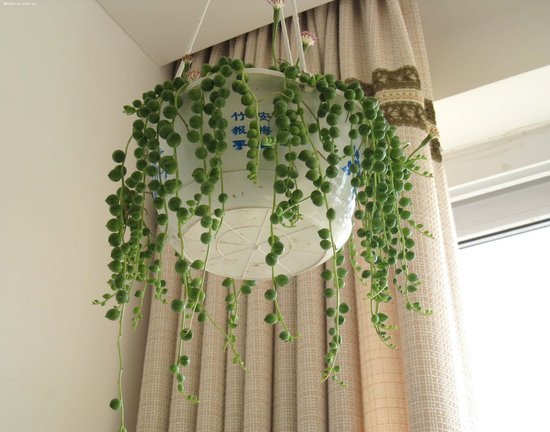
The Buddha-bead orchid native to southern Africa has a beautiful shape and is very suitable for ornamental plants. Its growth habit is warm and moist soil, can withstand drought, but not shade, and strong vitality, as long as give it a little water and nutrients, it can thrive. It does not require much light and can grow in strong light as well as in low light. The most suitable temperature for growth is between 15 and 25 degrees Celsius. Dry rather than wet is a key to the cultivation of orchid, too strong light will burn the plant, too weak light will lead to poor growth.
The culture method of Cymbidium mandshurica 1: breeding method
Most of the propagation methods of the orchid are cymbidium insertion, which can trim the branches and leaves, each section of 8MUE 10 cm, and then insert it into the basin soil, half covered, the humidity is controlled between 50% and 60%, and take root in 10 days to half a month, supplemented by careful care, in order to survive. At this time, it is most beneficial to plant growth to strictly control the amount of water and keep the pot soil in the state between dry and wet.
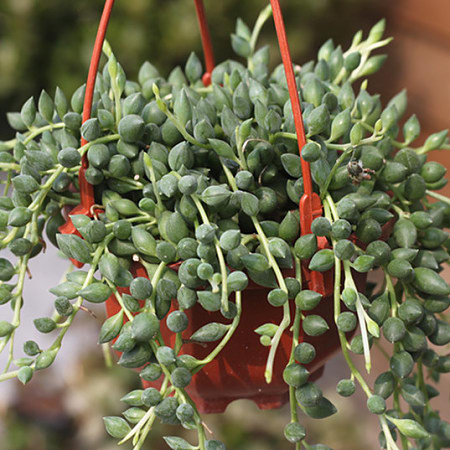
Detailed explanation of the culture methods of Cymbidium: 2: cultivation and management
Dry rather than wet is one of the key points in the cultivation of Cymbidium. In addition, it is also extremely important to apply thin fertilizer frequently. The so-called dry rather than wet is because the orchid from southern Africa likes a warm environment and is more drought-resistant than waterlogged, so it would rather be placed in a dry environment than stunted by too much watering. On the other hand, the frequent application of thin fertilizer says that fertilizer should be applied frequently, but each time it is light fertilizer, and one time it can not be fertilized too much, which leads to problems in its growth.
Detailed explanation of the culture method of Buddha bead orchid: 3: prevention of insect pests
In fact, there are few insect pests in Buddha bead orchids, but this is still the case. Generally speaking, the most common disease of Buddha bead orchid is aphid disease, which occurs in spring. When encountering this kind of phenomenon, it should be killed with 500 times omethoate. And in summer there will be mites, which can be killed 1000 times with triclofenac. When pests, pay attention to increase the humidity of the page, can reduce pests, in addition, ventilation facilities should also be in place.
The culture method of the orchid is introduced in detail. according to the above steps, we can make the orchid grow healthily. I hope that after reading this article, you will be able to distinguish all kinds of orchids and understand their growth habits so as to take good care of them and decorate our homes.
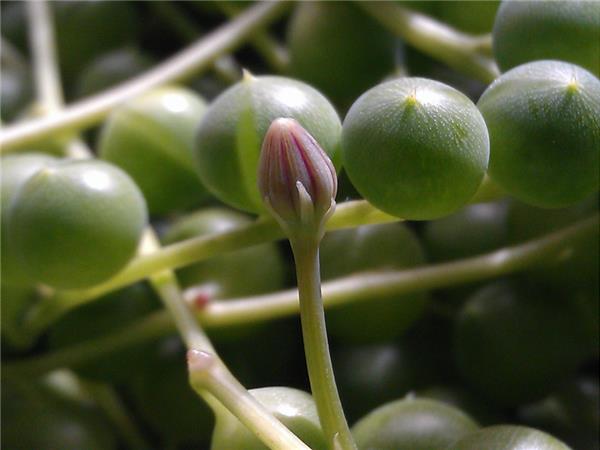
The growth habit of Chlorophyllum
The Buddha-bead orchid native to southern Africa has a beautiful shape and is very suitable for ornamental plants. Its growth habit is warm and moist soil, can withstand drought, but not shade, and strong vitality, as long as give it a little water and nutrients, it can thrive. It does not require much light and can grow in strong light as well as in low light. The most suitable temperature for growth is between 15 and 25 degrees Celsius. Dry rather than wet is a key to the cultivation of orchid, too strong light will burn the plant, too weak light will lead to poor growth.
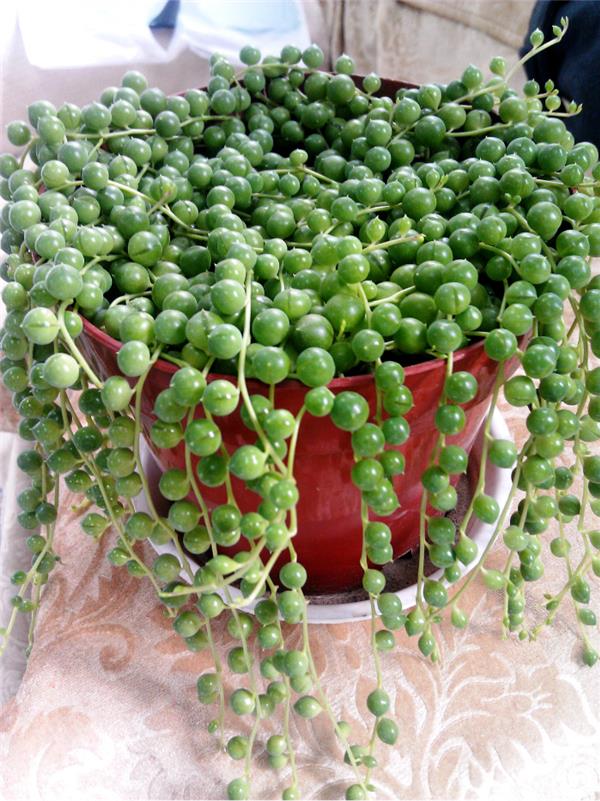
The culture method of Buddha bead orchid
1. Propagation method: the propagation method of Cymbidium is mostly cymbidium insertion, which can trim the branches and leaves, each section is 8 mm, 10 cm, and then insert it into the basin soil, half-covered, the humidity is controlled between 50% and 60%, and rooting in 10 days to half a month, supplemented by careful care, to survive. At this time, it is most beneficial to plant growth to strictly control the amount of water and keep the pot soil in the state between dry and wet.
2. Cultivation and management: dry rather than wet is a key point in the cultivation of Cymbidium. In addition, it is also extremely important to apply thin fertilizer frequently. The so-called dry rather than wet is because the orchid from southern Africa likes a warm environment and is more drought-resistant than waterlogged, so it would rather be placed in a dry environment than stunted by too much watering. On the other hand, the frequent application of thin fertilizer says that fertilizer should be applied frequently, but each time it is light fertilizer, and one time it can not be fertilized too much, which leads to problems in its growth.
3. Pest prevention: there are few insect pests in Buddha bead orchids, but this is still the case. Generally speaking, the most common disease of Buddha bead orchid is aphid disease, which occurs in spring. When encountering this kind of phenomenon, it should be killed with 500 times omethoate. And in summer there will be mites, which can be killed 1000 times with triclofenac. When pests, pay attention to increase the humidity of the page, can reduce pests, in addition, ventilation facilities should also be in place.
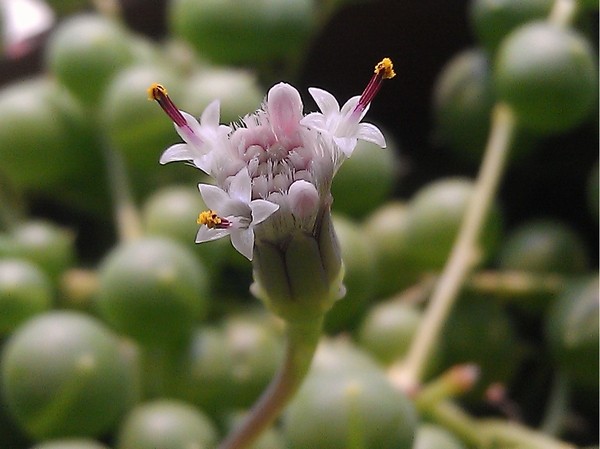
The above is the introduction of the breeding methods of the orchid, and I believe you have a further understanding of how to raise the orchid. Buddha bead orchid is oval globular fleshy leaves, light green, alternate; flowers yellowish white or lavender, small and lovely. Generally, the hanging beads in potted plants can be more than one meter long after three to four years, and they are green all the year round, which is deeply loved by family flower growers.
In addition, it is also extremely important to apply thin fertilizer frequently. The so-called dry rather than wet is because the orchid from southern Africa likes a warm environment and is more drought-resistant than waterlogged, so it would rather be placed in a dry environment than stunted by too much watering. On the other hand, the frequent application of thin fertilizer says that fertilizer should be applied frequently, but each time it is light fertilizer, and one time it can not be fertilized too much, which leads to problems in its growth.
3. Pest prevention: there are few insect pests in Buddha bead orchids, but this is still the case. Generally speaking, the most common disease of Buddha bead orchid is aphid disease, which occurs in spring. When encountering this kind of phenomenon, it should be killed with 500 times omethoate. And in summer there will be mites, which can be killed 1000 times with triclofenac. When pests, pay attention to increase the humidity of the page, can reduce pests, in addition, ventilation facilities should also be in place.

The above is the introduction of the breeding methods of the orchid, and I believe you have a further understanding of how to raise the orchid. Buddha bead orchid is oval globular fleshy leaves, light green, alternate; flowers yellowish white or lavender, small and lovely. Generally, the hanging beads in potted plants can be more than one meter long after three to four years, and they are green all the year round, which is deeply loved by family flower growers.
- Prev

Is it poisonous to grow Kirin palm at home? its breeding methods and matters needing attention
Is it poisonous to grow Kirin palm at home? its breeding methods and matters needing attention
- Next

The role and efficacy of cactus and home feng shui knowledge
The role and efficacy of cactus and home feng shui knowledge
Related
- Wuhan Hospital Iron Tree Blooming Result Was Instantly Frightened by the Gardener Master
- Which variety of camellia is the most fragrant and best? Which one do you like best?
- What is the small blue coat, the breeding methods and matters needing attention of the succulent plant
- Dormancy time and maintenance management of succulent plants during dormancy
- Minas succulent how to raise, Minas succulent plant pictures
- What are the varieties of winter succulent plants
- How to raise succulent plants in twelve rolls? let's take a look at some experience of breeding twelve rolls.
- Attention should be paid to water control for succulent plants during dormant period (winter and summer)
- Watering experience of twelve rolls of succulent plants
- Techniques for fertilizing succulent plants. An article will let you know how to fertilize succulent plants.

